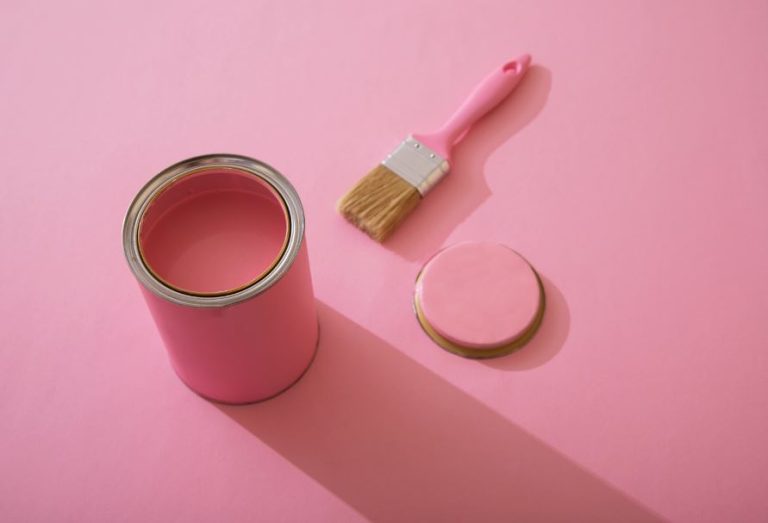It’s thrilling to embark on an interior painting project and paint a wall like a pro to revitalise your living space. The prospect of transforming a room with a fresh coat of paint is not only satisfying but also a cost-effective method to breathe new life into your home. As you prepare to embark on this DIY journey, arm yourself with the knowledge and painting techniques required to paint a wall like a seasoned professional.
In this comprehensive guide, we’ll unveil valuable insights and expert advice to paint a wall like a pro that goes beyond the basics. From mastering the art of achieving a smooth, flawless finish to conquering common challenges such as roller marks and uneven application, our goal is to empower you with the skills needed to elevate your house painting prowess. So, buckle up and let’s delve into the world of interior house painting, where every stroke holds the potential to redefine your living spaces.
First Tip to paint a wall: Begin Your Painting Journey with Quality Tools
Achieving a professional finish starts with the right tools, and skimping on quality can compromise your entire home painting project. Say goodbye to those disposable, all-in-one roller setups and invest in a high-quality roller frame that promises durability and longevity. Make the most out of your painting experience by attaching a 48-inch wood handle to the paint roller, offering enhanced reach and superior control. Alternatively, a threaded broom handle can serve the same purpose.
While conventional paint trays are common among homeowners, professional house painters often opt for a 5-gallon bucket paired with a specialised bucket screen. This pro setup not only outperforms traditional trays but also ensures smoother, more efficient painting, setting the stage for a flawless wall transformation. Choose your tools wisely, and you’ll pave the way for a painting venture that reflects the skills of a true professional painter.
Second Tip to Paint a Wall: Optimise Your Paint Roller with the Right Roller Cover
Choosing the correct roller cover or sleeve is a pivotal step in enhancing the efficiency and outcome of your paint rolling process. While it may be tempting to opt for the cheapest cover and dispose of it afterwards, investing in a quality roller cover pays off in the long run.
Avoid the pitfalls of cheap roller covers, which not only require extended cleanup time but also lack the paint-holding capacity necessary for a flawless finish. With a 1/2-inch nap wool blend roller cover, you’ll experience the significant difference it makes in terms of efficiency and consistency.
Be mindful not to apply excessive pressure during painting, as wool covers can become matted down. The key is to maintain a light touch and let the paint do the work. Keep the roller cover well-loaded with paint, applying just enough pressure to release and spread the paint evenly. Adopting this technique will yield professional results without unnecessary complications.
Third Tip to Paint a Wall: Perfectly Load Your Paint Roller for Smooth Application
Loading your paint roller cover efficiently is crucial to achieving a flawless finish on your walls. Do not hesitate to dip the roller into the paint, submerge it by approximately 1/2 inch, and then roll it against the screen. If your roller cover is dry, repeat this process five or six times initially. As the roller cover becomes saturated, two or three dips will suffice. Remember, success demands assertiveness!
The goal is to leave the roller almost dripping with paint. This ensures a consistent and even application of paint onto the wall surface. By mastering this step, you’ll streamline the wall painting process and enhance the overall quality of your work. Remember, a well-loaded roller cover contributes significantly to achieving that professional touch in your DIY painting project.
Fourth Tip to Paint a Wall: Create a Flawless Canvas: Mastering Surface Preparation
It is important to focus on a thorough surface preparation to achieve a professional finish on your painted walls. Start by addressing any imperfections – fill holes in the wall with lightweight spackling compounds, smoothing them to perfection as they dry. Take extra care to achieve a seamless surface, as this will significantly impact the overall quality of your final paint job.
To effectively eliminate old paint lumps and bumps, the ultimate tool for this task is a pole-mounted drywall sander with a 100-grit mesh drywall sanding screen. While other sanding methods may work, nothing compares to the efficiency and effectiveness of this tool.
Attention to detail is crucial during this phase, as it sets the stage for a flawless finish. Once you’ve perfected the wall’s texture, proceed to mask off the baseboard, window, and door trim. To prevent paint bleeding underneath the masking tape, expertly slide the blade of a flexible putty knife along the tape’s edge, creating a secure seal.
By meticulously preparing your surfaces, you lay the foundation for a painting project that exudes professionalism and precision.
Fifth Tip to Paint a Wall: Seamless Surfaces: Bye to Fat Edges and Roller Marks
Achieving a flawless, professional paint job involves maintaining smooth and even surfaces while avoiding issues like ridges or “fat edges.” Here’s your concise guide to sidestepping these problems:
- Mindful Loading: Dip only the nap into the paint when loading your roller, spinning it against the screen to control the amount. This prevents seepage and leaks during application.
- Gentle Application: Avoid excessive pressure while smoothing out the paint to prevent fat edges. Maintain a light touch for a consistent, even layer.
- Strategic Starting:Begin about 6 inches away from edges like corners or mouldings to avoid heavy paint buildup. Gradually work back toward the edge for an even distribution.
- Unload Excess Paint:Before smoothing the wall, tilt the roller to unload excess paint from the open end. Apply a little extra pressure on the open side while rolling up and down to ensure an even application without fat edges or roller marks.
Adopt these techniques to master the art of paint application and leave your walls with a flawless, professional appearance.
Sixth Tip to Paint a Wall: Perfecting Your Paint Roller Technique
To perfect your painting skills and attain a flawless finish, master the proper paint roller technique with these steps:
- Vertical Rolling Motion:Roll the paint up and down, covering about three-quarters of the roller width with each stroke. Ensure a slight overlap for even coverage from floor to ceiling, delivering consistency across the entire wall.
- Careful Corner Approach:When nearing corners, roll as close as possible to the adjacent wall without direct contact. This precision prevents smudges, ensuring a clean, professional appearance in tight spaces.
- Smoothing and Blending: Once you’ve painted the designated area, smoothly roll back over it without reloading the roller. Keep the pressure light to ensure a seamless and blended paint surface.
Incorporate these interior painting techniques into your routine for effortlessly elevated quality and a professional outcome.
Seventh Tip to Paint a Wall: Maintain a Wet Edge
Preserving a wet edge is pivotal for achieving top-quality paint results, whether you’re varnishing furniture, enamelling a door, or rolling paint on a wall. Plan your work sequence strategically and aim to work swiftly so that each newly applied stroke overlaps with the still-wet paint. Avoiding breaks during painting sessions prevents lap marks, ensuring a seamless finish.
Eighth Tip to Paint a Wall: Apply and Spread Paint Efficiently:
A common mistake among novice interior painters is taking too long to apply the paint. After laying on the paint, swiftly spread it out, repeating the process. This technique is effective with a high-quality roller cover that holds ample paint. Cover a small area (around 3 or 4 ft.) before smoothing it out. As you become familiar with the process, you can cover larger sections before smoothing.
Ninth Tip to Paint a Wall: Cutting In for Precision
Rollers can’t reach tight edges, so the initial step is to brush along the ceiling, inside corners, and mouldings—a process known as “cutting in.” This leaves brush marks that won’t match the roller texture on the rest of the wall. To achieve a cohesive look, carefully roll close to inside corners, mouldings, and the ceiling. Face the roller’s open end toward the edge, avoiding a fully loaded roller. With practice, you’ll master rolling vertically within an inch of the ceiling.
The Last Tip to Paint a Wall: Inspect and Remove Paint Lumps
At times, you might notice lumps in your paint. Prevent debris pickup by keeping the roller cover away from the floor. To avoid lumps caused by bits of debris, cover the bucket with a damp cloth when not in use and clean the screen if dried paint is present. Carry a wet rag to remove lumps as you progress, and strain used paint through a mesh strainer to eliminate any remaining imperfections. These simple steps guarantee a smooth, flawless finish in your painting endeavor.
Need a Professional Painter?
If you need professional painters for the job rather than DIY, rely on Grand Painting. We take pride in delivering the finest painting services, backed by a team of seasoned professionals boasting over 30 years of experience. Whether it’s interior painting or exterior painting, our expert painters ensure precision and excellence in every stroke. Elevate the aesthetics of your home or office with Grand Painting – where expertise meets perfection. Contact us now to turn your painting dreams into a vibrant reality!




